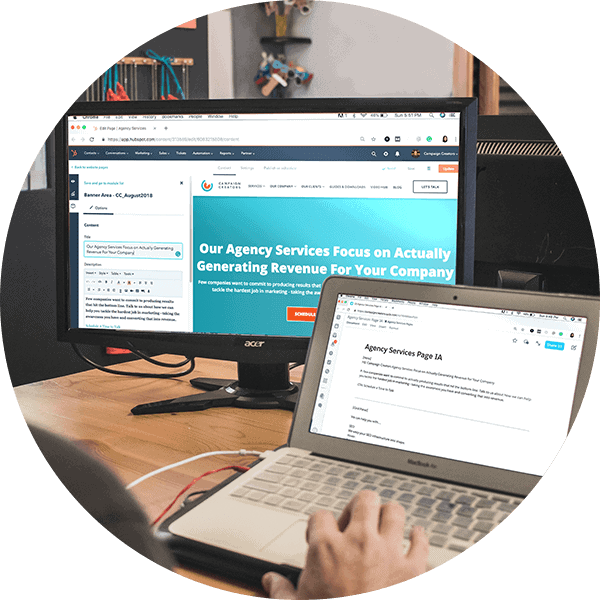
Marketing Automation for Manufacturers – A Comprehensive Guide
November 13, 2024
How Can Customer Service & Marketing Teams Work Better Together?
December 4, 2024What are your goals and KPIs as a sales professional?
For most sales teams, success is straightforward: it’s about closing as many deals as possible with the highest value possible. This is why upselling and cross-selling strategies are appealing as effective ways to boost sales.
Unlike attracting new customers, cross-selling and upselling begin with a key advantage: the customer is already engaged. Customers have already purchased from you and experienced your service or product. The long “prospect-client dance” of education, persuasion, trust-building, and negotiating is finally behind you. By now, customers (at least on paper) understand your value, so, in theory, it should be easier to convince them to buy from you again.
The question is though, are they happy enough to buy from you again?
As a curious kid, I tend to ask my mom many questions (too many, if you ask me), and her attitude always was, “Dear, if you never ask, you’ll never know.” She was absolutely right. If you don’t ask your customers how they feel about your product or service, you’ll never get the answer — and more importantly, you won’t know if they’re ready for another or bigger purchase. Perhaps a cross-selling opportunity awaits, and you are not aware of it?
Customer feedback is one of the most valuable data sources a sales department can tap into. The truth is that many aspects of modern business operations, from marketing to logistics, are increasingly relying on data to inform decision-making and streamline processes. This applies to sales departments too. By actively collecting and analyzing customer feedback, you can gain valuable insights to inform your upselling and cross-selling strategies and maximize their effectiveness.
Customer Feedback Management in a Nutshell
Customer feedback management is the process of collecting, organizing, and analyzing customers’ input to comprehend their experiences, preferences, and concerns. Strategic feedback goes beyond asking generic questions like “How satisfied are you on a scale of 1 to 10?” or “How easy or difficult was your experience?” Instead, collecting customer feedback should include open-ended inquiries that reveal unmet needs, pain points, and opportunities for improvement.
When done effectively, customer feedback management provides businesses with actionable data to refine products, services, and strategies, making it an invaluable tool for growth. Moreover, it fosters stronger relationships with customers by showing them their input matters, ultimately increasing trust and loyalty while creating new opportunities for innovation and sales.
The Connection Between Customer Feedback and Sales Growth
Customer feedback is not just for the customer care team. With the right approach, it can be a powerful sales driver too. To best exemplify the connection between customer feedback management and sales growth, let me share a story about one of our clients — a global company in the data center and telecom cooling industry.
Over several months of working with the client, we created a space for open communication, where they shared their thoughts, pain points, and satisfaction with our services. By actively listening to their feedback, we identified a specific need that aligned perfectly with a new solution we could provide. Our confidence in recommending this solution came not only from its potential to address their challenge but also from the client’s demonstrated satisfaction with our results, which suggested they might be open to expanding their partnership with us.
This story highlights how leveraging client feedback can uncover opportunities to provide additional value. The results were threefold: First, the client finally found a solution to their need. Secondly, we further positioned ourselves as a reliable partner. And lastly, we achieved growth by capitalizing on cross-selling opportunities.
Ultimately, effective customer feedback management bridges the gap between your customers’ needs and your sales potential. By being open to listening (not hearing, listening) to your customer feedback and addressing their sentiments, preferences, and pain points, you can route your cross-selling and upselling efforts to deliver exceptional value and compel repeat business. In doing so, you not only drive revenue but also foster long-term loyalty that strengthens your brand’s reputation and fuels future growth.
How to Collect Customer Feedback?
At Waypost Marketing, we recommend two complementary methods for collecting customer feedback:
1) Utilizing HubSpot Service Hub
HubSpot Service Hub is an all-in-one platform equipped with a suite of powerful tools designed to streamline customer support, enhance satisfaction, and simplify service delivery. While it’s often associated with service teams, the Service Hub also offers powerful benefits for business owners and sales teams. For instance, the Service Hub’s customer feedback management tools allow sales professionals to collect and analyze key satisfaction metrics such as Net Promoter Score (NPS), Customer Satisfaction (CSAT), and Customer Effort Score (CES). These insights not only gauge customer satisfaction but also uncover upselling and cross-selling opportunities.
In addition, the Service Hub’s centralized communication capabilities enable sales teams to track and analyze customer interactions across all channels, including email, chat, and social media, in one place. This ensures seamless collaboration and a complete view of the customer journey, which is invaluable for identifying sales opportunities and personalizing outreach.
Sales professionals should keep in mind that Service Hub is just one of HubSpot’s six interconnected “HubSpot Hubs,” making it particularly effective when used alongside the Sales Hub. By consolidating tools within the HubSpot ecosystem, sales teams benefit from faster adoption, reduced data silos, and enhanced efficiency overall. This integrated approach ensures that the whole system is greater than the sum of its parts.
Periodical Conversations
While digital tools like HubSpot Service Hub are invaluable, nothing can replace the depth and nuance of direct, periodic conversations with your customers. These interactions, whether through monthly meetings, open email communications, or dedicated check-in calls, provide a unique platform for customers to share more detailed feedback than what can be captured in a survey. These conversations encourage customers to share their broader business challenges, emerging needs, and strategic objectives, fostering trust and opening doors to deeper insights.
In the context of cross-selling and upselling, this approach helped us identify an unmet need and effectively present a new solution to our client, as was shown in example described earlier.
Cross-Selling Opportunities are Just One Survey Away
In our competitive marketplace, businesses can’t afford to view customer satisfaction as just another metric. From now on, businesses in general and sales departments in particular should see customer feedback management as an essential part of sales strategies. The good news is that gathering these insights isn’t as overwhelming as it might seem. All it takes is sending a survey or giving your customers a call, asking them how they are doing.
At Waypost Marketing, we’re here to help you leverage these strategies to achieve your sales potential. If you’re ready to take your customer feedback management to the next level, get in touch with us today. We also offer HubSpot onboarding services to ensure your team can maximize the full potential of HubSpot for streamlined sales and customer service. Let us help you transform your customer insights into sustainable business growth.








